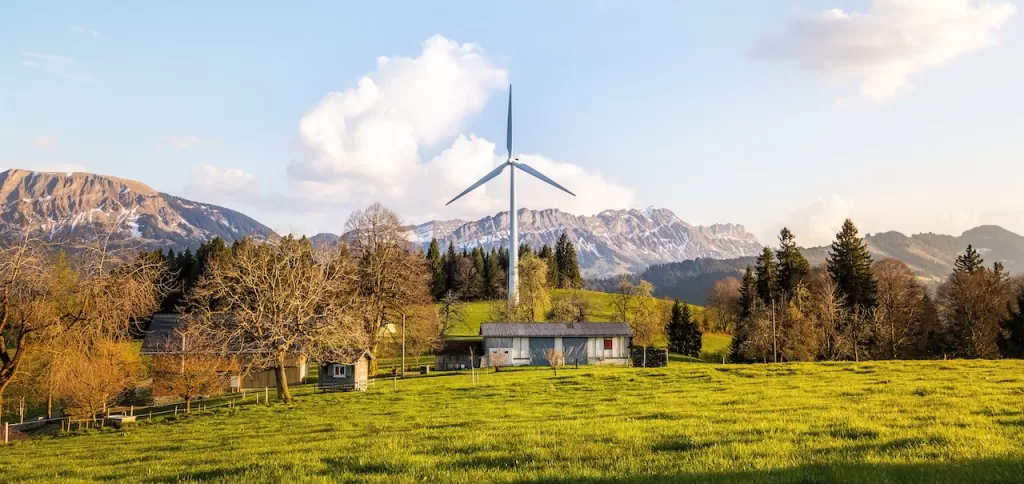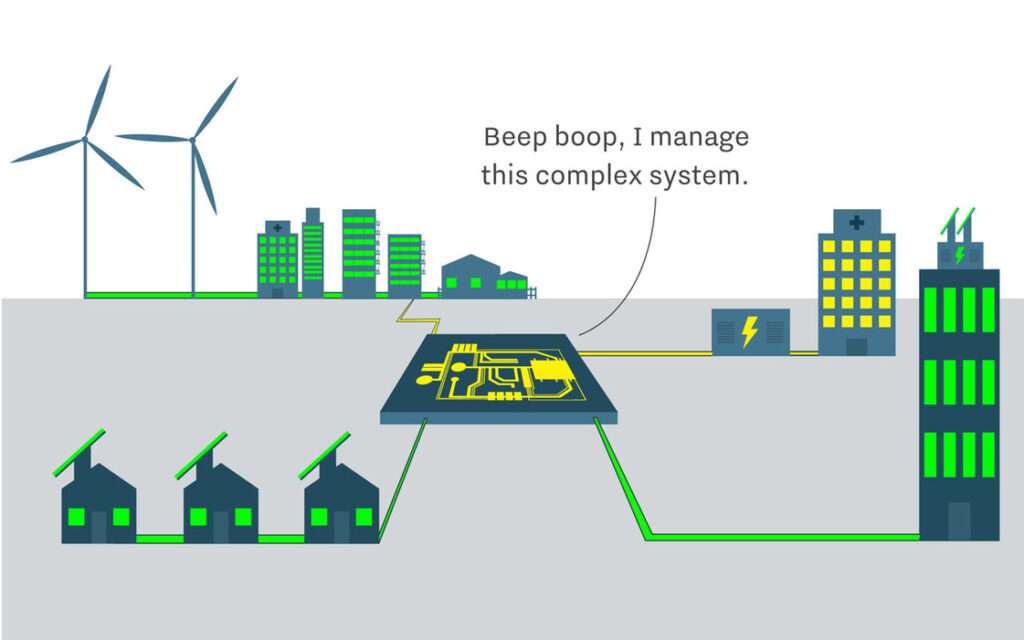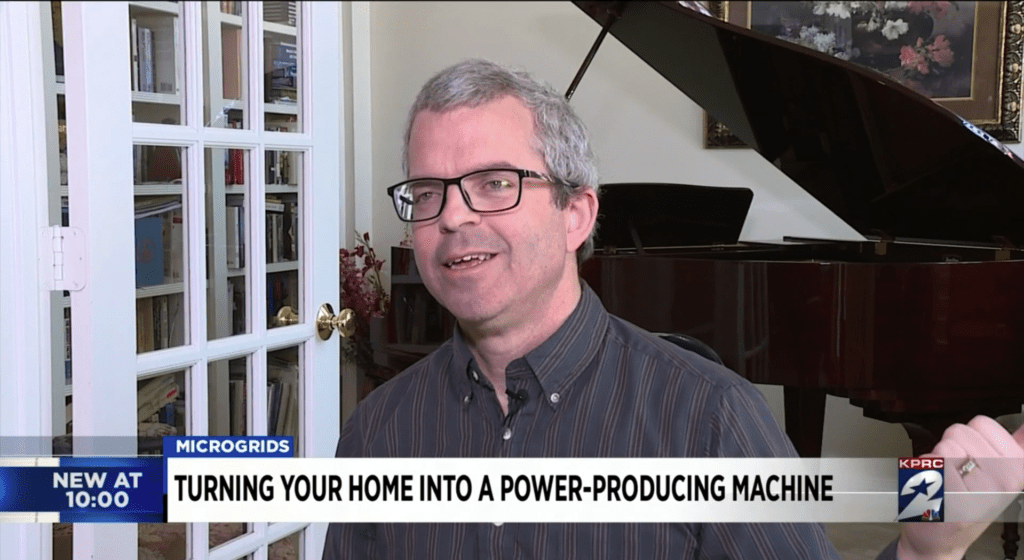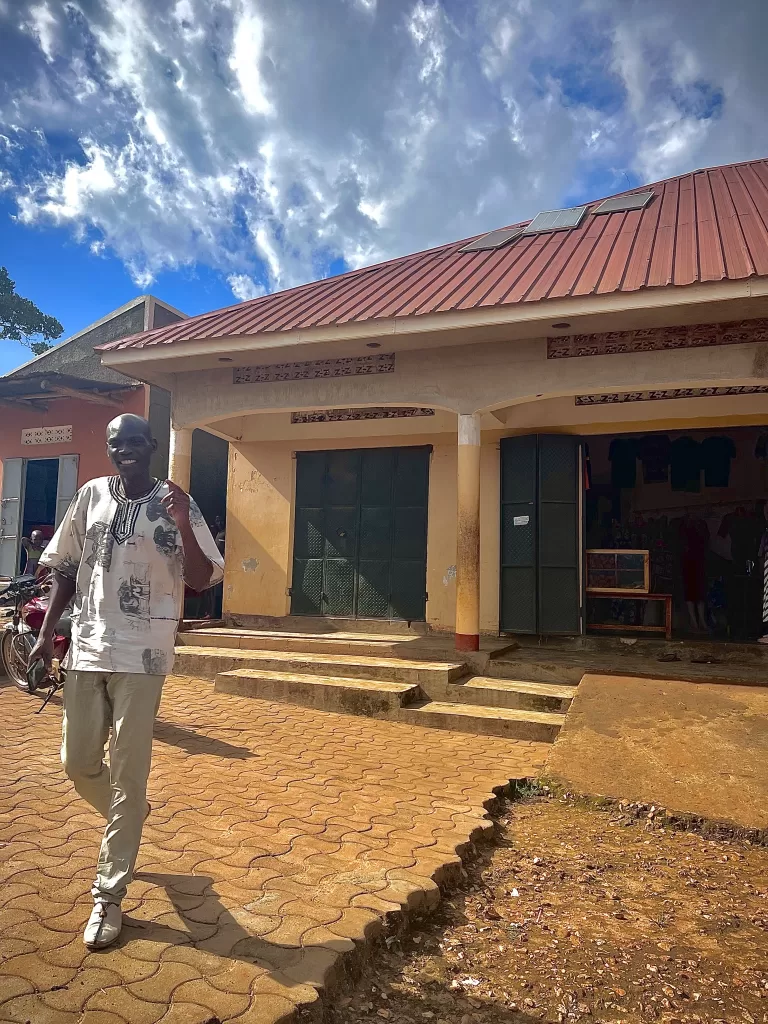A renewable microgrid is a tool of empowerment. It turns the wind, sun, earth, and water’s energy into clean electricity and uses batteries to store backup power. A renewable microgrid can power your electronics, vehicles, homes, businesses, and facilities.
Some renewable microgrids can fit into a backpack; others are large enough to serve whole communities. Regardless of their size, as soon as they’re turned on, all renewable microgrids create an electric island.
Renewable microgrid use has spread rapidly in the past few years.
Necessity is so often the mother of innovation.
Unpredictable energy prices, unelectrified communities, blackouts, and the climate crisis are driving us to decentralize energy production and abandon fossil fuels. We’re evolving how life is powered.
Renewable microgrids break our dependence on getting energy from an unreliable, often inaccessible, fossil-fuel-powered electric grid.
Why we’re choosing renewable microgrids
Renewable microgrids independently produce clean electricity.
Yet most grid-connected people continue receiving some energy from their utility company even after getting one. Having the option to get power from the grid or a microgrid offers lower energy costs, more reliable backup power, and cleaner energy.
On the end of the spectrum are off-grid users. Getting power from a renewable microgrid often has an even more significant impact on their lives.
1 in 7 of us can’t access electricity from the grid. Renewable microgrids often are the only option for power off-grid homes and facilities, as well as professions and hobbies. Renewable microgrids enable us to leapfrog centralized grids and start producing electricity for ourselves.
How a microgrid works
Microgrids’ power management system marries energy storage with an electricity generator. That system allows the user to monitor and control the microgrid’s energy input, electricity output, and available backup power.
3 core components of a microgrid:
- Electricity generator
- Energy storage
- Power management system
Renewable vs. Fossil microgrids
Since Thomas Edison created the first microgrid in New York City in 1882, microgrids have used diesel and gas-burning engines to generate electricity. Many of these old-school fossil fuel microgrids operate today.
But we can generate electricity more efficiently, sustainably, and cost-effectively this century with clean energy technologies. Renewable microgrids’ generators are clean energy technologies, like solar panels, windmills, hydro turbines, and heat pumps. These technologies collect energy from locally abundant natural sources.
A microgrid’s energy storage also depends on whether it’s renewable or fossil. Fossil microgrids rely on fuel, so you must maintain a stockpile and often have a pipeline to ensure uninterrupted power. Renewable microgrids store power in batteries frequently charged by local clean energy sources, enabling renewable microgrids to provide more reliable power.
Batteries also unlock money-making opportunities by enabling the sale of stored energy and the rental of excess storage space.
3 core components of a renewable microgrid
- Clean electricity generator
- Battery
- Power management system
Clean electricity generators
A renewable microgrid collects naturally abundant energy and turns it into electricity with these clean energy technologies:
More than one of these technologies is often used to enhance resiliency and energy supply.

Renewable microgrid batteries
When a renewable microgrid collects more energy than needs to be used, the extra is stored in a battery.
Batteries work perfectly with renewable microgrids because they’re powerful, rechargeable, transportable, and integrate with clean energy technologies.
Renewable microgrids use many types of batteries:
The batteries use chemical reactions, gravitational pull, and even temperature differentials to store energy.
Most commonly though, renewable microgrid batteries are lead-acid, like the ones in your flashlight or gas-powered car, or lithium-ion, like the ones in your cell phone or electric vehicle.
Renewable microgrid management system
A microgrid is a “micro” “grid” because it generates, stores, and manages electricity like a grid, but it does it locally, at a smaller scale and without depending on a utility company’s network of powerlines and stations.

A renewable microgrid creates an electric island around it. Its power management system gives you control of the island’s energy storage and use. Complex renewable microgrids use software to manage their operations.
Some software platforms are designed to interconnect with the grid and can island when needed. Others provide the ability to operate entirely separately. Renewable microgrids with a grid connection are often more powerful. The disconnected ones offer greater independence.
When choosing or building a renewable microgrid it’s essential to ensure that its management software and user platform are compatible with the hardware – many are designed for specific batteries and generators.
Who uses renewable microgrids?
People all over the globe use renewable microgrids.
They’re Houston homeowners like Richard Boneno, whose solar microgrid kept his home warm and illuminated when winter storm Uri knocked out the state of Texas’s grid for over a week in 2021.

They’re Ugandan entrepreneurs like Ben Male who’s paying for his childrens’ education by building gaming centers powered by renewable microgrids in off-grid communities.

They’re Welsh families like the one who bought the Bron Yr Aur where Led Zepplin wrote Stairway to Heaven. The family powers the cottage with a wind, solar and hydro microgrid, saving $16,000/year on energy bills.

They’re residents of Barranquitas, Puerto Rican who suffered in the through a months long power outage in the aftermath of Hurricane Maria and built 42 solar panels renewable microgrid at the local school, Segunda Unidad Federico Degetau. Giving the community energy independence and getting their kids back in the classroom before the Puerto Rican government was able to repair the grid.

Renewable microgrids power today
Now that renewable microgrids are cost-effective and accessible, powering life will never be the same.
We’ve begun unlocking the transformative power of renewable microgrids.
We’re evolving from the 20th century’s reliance on massive centralized fossil-fueled energy networks to a 21st century electrified by clean independent local energy.
All over the globe, we seen that…
The costs of energy’s status quo are too high.
Our centralized energy infrastructure is outdated and unreliable.
A billion of us live in unelectrified homes because we can’t access the grid.
Fossil pollution pollutes our communities and kills people daily.
So we’re creating lives powered with electricity that’s clean, affordable and locally generated. We’re creating energy independent lives powered by renewable microgrids.

How to own an electric island
If you’re ready to get your own electric island and becoming energy independent. Do it. Join us. Here’s how:
- Research which renewable microgrids are the right fit for you through more Electric Islands blog posts and these resources:
- Greentech Media is one of the most trusted sources of clean energy current events. Their microgrid newsfeed is a great place to learn about renewable microgrid products, services, and trends.
- Microgrid Knowledge is an authority on old-school and renewable microgrids for homes, businesses, and facilities.
- Power your life with a renewable microgrid with the products from these companies:
- Energy Sage allows you to get quotes from local microgrid installers in North America.
- LuminAID and Goal Zero create powerful portable solar microgrids that I use on long outdoor adventures.
- Get remarkable renewable microgrid content sent to you by joining the Electric Islands mailing list.
